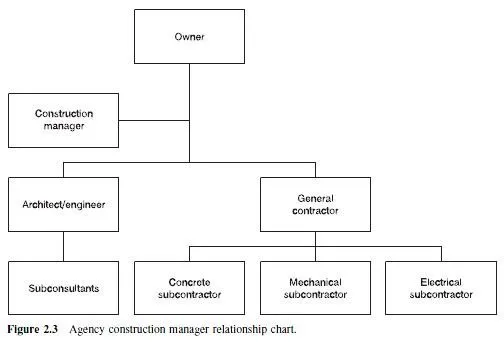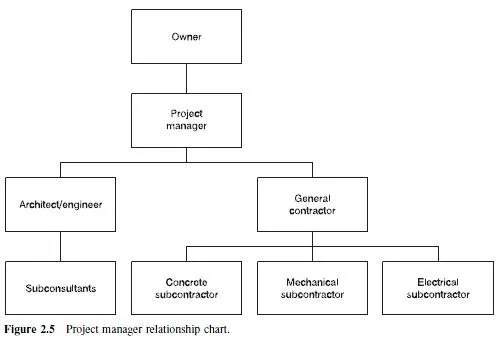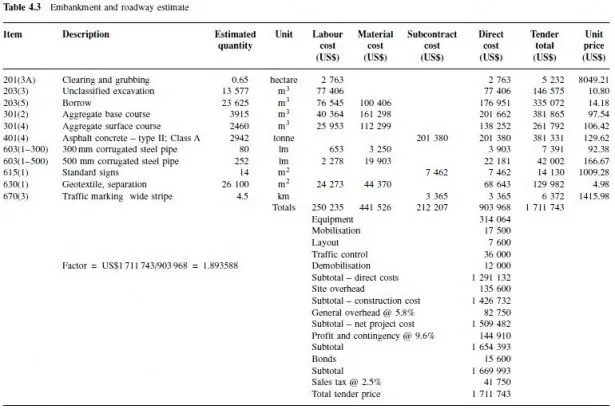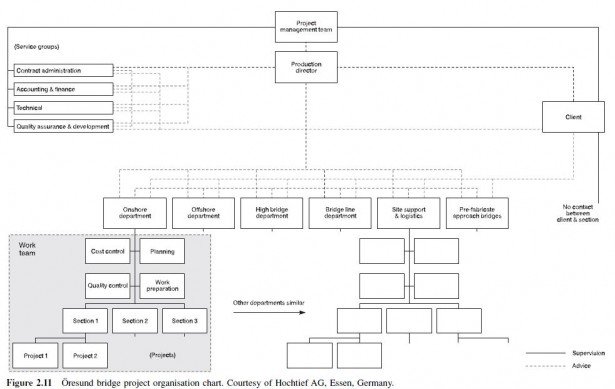The owner may engage a construction manager to provide professional construction management services. The construction manager organisation provides advice to the owner regarding construction matters, including cost, schedule, safety, the construction process and other considerations; such advice may be offered throughout the project life cycle or at selected portions thereof. Two types of construction management have evolved (Rubin et al., 1999; Clough and Sears, 1994); they are depicted in Figures 2.3 and 2.4 respectively. In the agency type of construction management arrangement, the construction manager acts as advisor to the owner for a fee and the owner engages separate contractor and designer organisations. Here, the construction manager acts as an extension of the owners staff and assumes little risk except for that involved in fulfilling its advisory responsibilities. Note that Figure 2.3 shows the construction manager in a position out of the direct line between the owner and contractor.
In contrast, the at-risk construction manager occupies a contractual position between the owner and the execution contractors, as shown in Figure 2.4. It is not a coincidence that Figure 2.4 is very similar to Figure 2.1, for the construction manager replaces the general contractor in this arrangement and thus holds the various trade contracts. In addition to the general contractor roles as described in the section on the traditional designtenderbuild approach, the at-risk construction manager provides expert advice to the owner on all matters related to the construction, usually beginning well before the field work begins. Often, the contract between the owner and the construction manager is based on a guaranteed maximum contract price, as described later in this chapter. Whereas the general contractor of Figure 2.1 often performs some of the field construction work itself, most, if not all, of the actual construction in at-risk construction management is performed by subcontractors.
Whether agency or at risk, construction management contracts have certain inherent advantages and disadvantages. By engaging an expert advisor early in the process, the owner can achieve a project with a near optimal balance of time, cost and quality features, due to the opportunities for review of design alternatives as they are developed. Materials and equipment with long delivery times can be identified and ordered early in the process. There may be less exposure to contract claims and litigation. A disadvantage is a lack of consistency in contractual arrangements among different projects. Furthermore, even though it is the owners advisor, the construction manager may tend to emphasise the traditional contractors interests in cost and time savings, to the detriment of high-quality construction. Even though the at-risk construction manager enters into contracts with subcontractors, these contracts are often in the name of the owner; thus, these subcontractors may look to the owner for payment, unlike in the Figure 2.1 type of general contractorsubcontractor arrangement.
A lawsuit that arose from a construction management arrangement helps clarify the differences between agency and at-risk contracts (Simon, 1989). In Owen Steel Co. versus George A. Fuller Co. (563 F. Supp. 298 [S.D.N.Y. 1983]), a structural steel and metal decking subcontractor sued Fuller, the projects construction manager, as well as the owner, for approximately US$ 1 million allegedly due. The construction manager argued successfully that it was in an agency relationship with the owner and thus was not obligated for the owners responsibility, based on the New York State law that precludes agents from liability for sums owed to third parties by the principal. Thus, the agent, Fuller, was not assuming any liability under the contract and was in no way responsible for any lack of payment that existed between the subcontractor and the owner.




